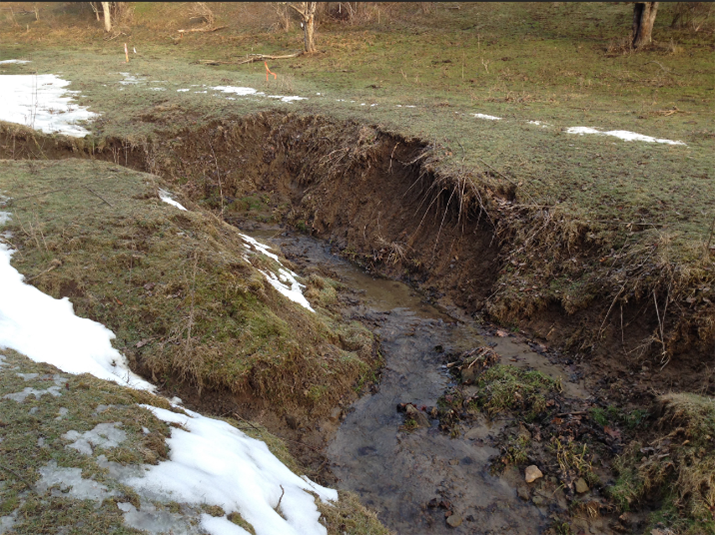Compensatory Mitigation
What is Compensatory Mitigation? Compensatory mitigation is the process by which impacts on aquatic resources, such as streams, wetlands, or other bodies of water, cannot be avoided or minimized such that there is not a loss of the resources or its functions and values, and compensation is provided through substitute resources or environments.
For example: A permit application is submitted to fill 0.5 acre of wetland, and to approve the permit the permittee must provide replacement acreage of wetlands to compensate for this loss of wetland acres and functions and values.


Compensatory mitigation site before and after
When is Compensatory Mitigation Required?
Compensatory mitigation is required for the loss of a wetland, a portion of a wetland, functions and values, or for impacts to other aquatic resources where mitigation measures cannot be avoided or eliminate the adverse impacts.
What Methods of Compensatory Mitigation are Accepted by DEP?
There are three different methods of compensatory mitigation accepted by DEP. They are Mitigation Banking, In-Lieu-Fee, and Permittee Responsible Mitigation.
Mitigation Banking involves the purchase of credits by the applicant from a private mitigation banker. Mitigation bankers obtain banking permits from DEP and create mitigation banks of replacement resources. This process provides applicants with regulatory relief of compensatory mitigation requirements once credits are purchased.
In-Lieu Fee is the purchase of credits from DEP through DEP’s in-lieu fee program (managed by DEP). This program is PIESCES. This process provides applicants with regulatory relief of compensatory mitigation requirements once credits are purchased.
Permittee Responsible compensatory mitigation is where permittees are responsible for implementing compensatory mitigation of aquatic resources as part of the approved permit. Applicants must provide proposed replacement plans as part of the application approval process, and must ensure that replacement resources are constructed and monitored and meet the objectives. This process does not provide regulatory relief to the permittee.